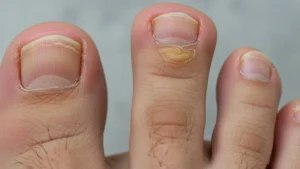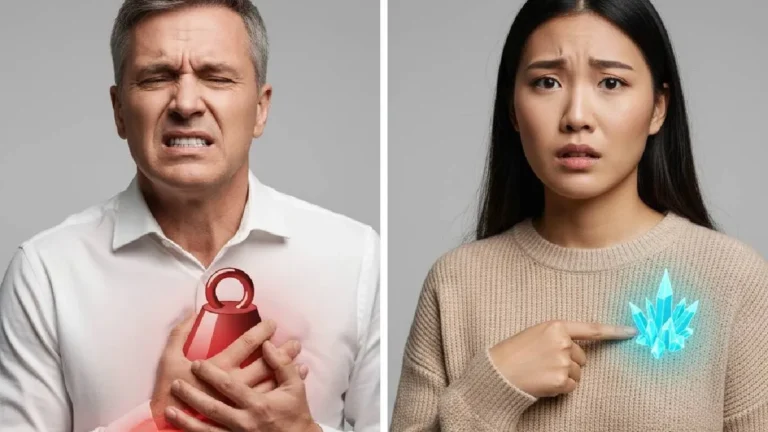Swollen feet in older adults are a common problem. Medically known as edema, it occurs due to an abnormal accumulation of fluid in the extremities.
This swelling usually affects both feet and can include the ankles, calves, and even thighs.
Leg edema may or may not be accompanied by pain, as well as other symptoms, such as varicose veins, a feeling of heaviness, itching, tingling, and sensitive, reddened skin.
Swollen feet in older adults often occur due to a combination of age-related factors and are often not serious.
If so, it is necessary to assess whether these factors can be addressed and find remedies to mitigate the discomfort they may cause.
In any case, this is not a trivial matter, as swollen feet in older people can impair their mobility, worsening the problem and diminishing their independence.
In other cases, they can also be a symptom of a serious dysfunction in the body that should be evaluated as soon as possible by a specialist.
Why do older people’s feet swell?
The causes of swollen feet in the elderly can vary. However, the following are particularly common among older adults:
- Age. The aging process causes the valves in the veins in the legs to lose collagen and elastin, affecting their firmness and function. This can make it difficult for blood to return to the heart and cause blood to pool in the lower extremities, eventually leading to leg swelling in older people. This is medically known as venous insufficiency, and beyond swollen feet, it can also be accompanied by symptoms such as dry, red, or irritated skin, varicose veins, thickening and hardening of the skin on the legs and ankles, and slow-healing ulcers or wounds on the lower extremities.
- Sedentary lifestyle. Older people tend to be more sedentary, which leads to circulation problems and, consequently, swollen feet.
- Diet. Sometimes, leg edema in older adults is related to their diet. A diet high in salt, inadequate hydration, or poor nutritional status (not consuming enough protein or a significant loss of this nutrient, usually during a period of illness) can also manifest as swollen feet, ankles, and legs. Alcohol, meanwhile, can cause the body to retain excess water, also causing swelling in the lower extremities.
- Improper footwear. Shoes that constrict the foot can impede blood flow and cause swelling. That’s why it’s so important to wear comfortable shoes. This bad habit is widespread throughout the population, including older adults. A recent study from the University of Extremadura concluded that the majority of the Spanish population over 65 years of age wears inappropriate shoes. In addition to swelling, uncomfortable footwear can lead to foot pain, blisters and chafing, split toenails, and calluses, among other problems.
The aging process, lifestyle, and wearing inappropriate footwear are some of the main causes of swollen feet in older people.
- Medications. As people age, they tend to take more medications due to the development of chronic conditions, and leg edema can be one of the side effects. Antidepressants, certain blood pressure medications (calcium channel blockers), estrogen-based hormone replacement therapy for menopause, corticosteroids, and nonsteroidal anti-inflammatory drugs ( NSAIDs ) such as ibuprofen can cause swollen feet and ankles in older patients.
- Injury. An injury or surgery involving the lower extremities can cause swollen, purple feet in older adults.
- Heart disease . Swollen feet can be a symptom of heart disease or heart failure. This occurs because when the heart is damaged, it can’t pump blood efficiently, and the body retains fluids. In addition to swollen feet, other warning signs in older adults include shortness of breath (particularly during exercise or rest), a rapid heart rate, weakness and fatigue, coughing or wheezing, white or pinkish phlegm with blood stains, abdominal distension, rapid weight gain, loss of appetite, nausea and vomiting, and difficulty concentrating or confusion.
- Kidney disease. People with kidney failure cannot properly drain fluids, and fluids can accumulate in the body, especially in the lower extremities, causing swollen feet in older adults. Other symptoms that may accompany this leg swelling due to kidney disease include infrequent urination, difficulty breathing, numbness or fatigue, chest pain or pressure, seizures, nausea, or confusion.
- Liver disease. Liver conditions can inhibit the production of albumin, a protein that helps stop blood from leaking from the blood vessels. A lack of albumin can cause blood to leak from the veins and fluid to accumulate in the legs, causing swelling in the ankles and feet. Beyond edema, other symptoms of liver disease include jaundice (yellowing of the skin and eyes), dark urine, easy bruising, loss of appetite, itchy skin, lack of energy, nausea and vomiting, a soft and bloated abdomen, and pale, bloody, or black stools.
- Blood clot. Surgeries, hospitalizations, and certain diseases, such as cancer, increase their incidence with age. All of these are risk factors for developing a blood clot and, for this reason, can be the cause behind swollen feet in older people. Blood clots occur when blood doesn’t flow properly and platelets stick together. When this occurs in the veins of the legs, it can hinder the return of blood to the heart, resulting in swelling in the feet, ankles, and legs. This is known as deep vein thrombosis and is a serious condition, as it can block the main veins in the legs or break loose and travel to the heart or lungs. In the case of blood clots, the peculiarity is that only one foot is swollen. Pain, discomfort, and changes in skin color also occur only in the affected leg. Another symptom of a blood clot is a mild fever (38.1ºC-38.5ºC).
- Infections. An infection can also cause leg swelling. Diabetes in the feet manifests itself, among other things, with an increased susceptibility to infections. These can easily become complicated, so people with diabetes should remain alert to any changes in their feet.
Beyond all these causes of swollen feet in older adults, this age group is also more prone to leg edema on long trips (for example, when traveling by plane or driving for many hours), when standing for long periods, in hot climates, or if they are overweight or obese.
Remedies for swollen feet in the elderly
Swelling in the legs, ankles, and feet may be occasional and resolve on its own. However, if it recurs, there may be an underlying cause that requires medical treatment.
Hence, the importance of consulting a specialist if the condition does not resolve with the following advice:
- Follow a healthy diet that ensures sufficient protein intake.
- Drink a minimum of 8 to 10 glasses of water a day.
- Limit or stop consuming alcohol and tobacco, as the latter also negatively affects circulation.
- Reduce salt intake.
- Include potassium-rich foods in your diet, as they can help reduce water retention. Potassium-rich foods include potatoes, legumes, bananas, cabbage, kiwis, and mushrooms.
- Stay active and exercise your legs by walking, hiking, biking, swimming, or doing other physical activity.
- Lose weight if you are overweight or obese.
- Do not remain sitting or standing for long periods.
- Do not cross your legs when sitting.
- Wear comfortable and appropriate footwear for each activity.
- Wear compression stockings or socks.
- Avoid very tight clothing.
- Soak your feet in cold water or apply cold compresses or ice to treat pain . You can also alternate periods of warm and cold water in the shower.
- Place your legs on pillows so they are above the level of your heart to rest and sleep.
- Massage your feet, using circular movements towards your thighs, and use creams for tired or overheated feet.
- Take frequent breaks while traveling to stand up and, whenever possible, walk around.
- Examine your feet daily to detect any abnormalities and treat them as soon as possible.
- Consult your doctor about the medications you are taking to assess the dosage or consider prescribing a different drug.
- Visit the podiatrist regularly.
- Try physical therapy treatments that can help with swollen feet, such as manual lymphatic drainage or pressotherapy.
Considering that swollen feet in older adults can indicate a serious condition, it is important to emphasize that this symptom should never be minimized.
It is essential to seek immediate medical attention if the swelling is accompanied by difficulty breathing, chest pain, or fever. It is also important to seek immediate medical attention if the swelling in the feet worsens and the legs are red or hot to the touch.























+ There are no comments
Add yours